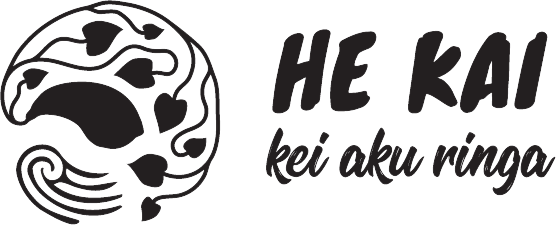16 May Te Wānanga o Pohutukawa with Wiremu Sarich

At the base of Taumarumaru Pā, one of the three pā sites situated within Taumarumaru Reserve, stands a Pohutukawa tree that became our first “classroom” for the day with Wiremu Sarich. Wiremu is a Youth Educator at Te Oranga – Te Runanga of Te Raukawa in Kaitaia. He uses a sense of creativity and storytelling alongside principles of taonga tākaro to develop and deliver a series of games and activities aimed at “encouraging and fostering kōrerotanga (communication), mahitahi (cooperation), whakakotahitanga o te tangata (coordination)” with tamariki. A couple of weeks ago, Wiremu spent the day with us (a group of six interns from Toi Tangata and The University of Otago) to share some of his methods and insights on delivering AKO and Taonga Tākaro.

From Taumarumaru, to Ohumuhumu, to Otanenui, we were taken on a journey throughout the day from pā to pā utilising a few of Wiremu’s naturally sourced taonga tākaro resources to learn and experience simple (and not so simple) activities based in and encompassing Te Ao Māori. The use of te taiao as a learning environment has some obvious advantages when applying the learning of taonga tākaro, but the benefit of having access to such a rich source of environmental and Māori history from Wiremu was undeniable.
The opportunity to learn more about taonga tākaro was hugely valuable, but the process by which Wiremu teaches using mātauranga Māori, an astute understanding of individual personalities of tamariki (young and old), and the age-old art of storytelling – is what really stood out. Lesson planning, strict rules, and time-limits are not uncommon structures used to manage a learning environment, but with a naturally flowing process Wiremu guided the day’s learning by allowing Taumarumaru and the surrounding environment to lay out the day’s lessons.
Tama-nui-te-rā beat down on us and allowed us to appreciate the shade of Te Wānanga o Pohutukawa while we could. As we negotiated the different spaces in and around Taumarumaru, from our base to the beach, up and over Ohumuhumu and Otanenui, and through to the stream that brought us back to our starting point, we stopped to kōrero, practice our skills with the Pūtatara (click for my attempt at the top of Otanenui), or try our hand, or feet, at one of the many games Wiremu has on tap.

The few highlights of the day, for me, included seeing the young tama that joined us for the day, fully engaged in the learning process and schooling all of us older “kids” on the Pūkaea and Pūtatara (click the link to see how it’s really done). I enjoyed connecting with Ohumuhumu on a solo hill climb, where the view was a taonga I can now reflect on as a memory of an awesome day of learning.

A whakatauki that echoes something Wiremu shared about the revitalisation of traditional games and other practices seems to sum up the success of what he is a part of:
Titiro whakamuri hei ārahi i ngā uaratanga kei te kimihia.
Make use of traditional knowledge of the past but to also seek out new ways of doing things, in order to be adaptable to the changing environment.
Kia ora Wiremu – ka rawe to mahi!
Nā Debs Heke


